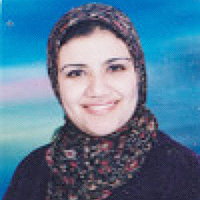Abstract
Research Article
Clinical Performance of the Erba H7100 Hematology Analyzer: Focus on Reticulocytes
Mamta Soni and Poonam Lalla*
Published: 18 September, 2025 | Volume 9 - Issue 1 | Pages: 020-026
This study comparatively evaluated the analytical performance of the Erba H7100 hematology analyzer against the Siemens Advia 2120i and Beckman Coulter DXH 900, using 243 patient samples. The study assessed the agreement and linear relationship across 14 key hematological parameters in whole blood, employing statistical methods that included mean bias, standard deviation of the difference, Pearson’s correlation, and coefficient of determination. Additionally, reticulocyte counts were analyzed in 27 samples for Erba H7100 vs. Advia 2120i and 53 samples for Erba H7100 vs. DXH 900, revealing exceptional agreement with high Pearson’s r and r-squared values. The performance of the Erba H7100 and DXH 900 in analyzing ascitic, cerebrospinal, and bronchial wash fluids was also evaluated. Notably, the Advia 2120i analyzer exhibited discrepancies in mean corpuscular volume (MCV) and monocyte counts (Mon#). Conversely, the Erba H7100 showed better agreement with the DXH 900 for MCV and Mon# in whole blood. In fluid samples, Erba H7100 and DXH 900 demonstrated a strong correlation with Microscopy in determining Neutrophil % and Lymphocyte % values. Strong linear correlations were observed for most parameters in whole blood, with reticulocyte counts showing near-perfect correlation. This study underscores the importance of rigorous validation and potential platform-specific reference intervals to ensure accurate and reliable hematological testing, emphasizing the need for standardized methodologies in clinical laboratories.
Read Full Article HTML DOI: 10.29328/journal.jhcr.1001037 Cite this Article Read Full Article PDF
Keywords:
Hematology analyzer; Erba H7100; Siemens Advia 2120i; Beckman Coulter DXH 900; Correlation analysis; Bland-Altman analysis; Hematology standardization; Automated blood cell counters
References
- George L, Basu D, Kar R. Comparison between manual and automated methods of counting reticulocytes and the effect of sample storage on reticulocyte count: a cross-sectional study from Southern India. Indian J Hematol Blood Transfus. 2021;38(1):106–110. Available from: https://doi.org/10.1007/s12288-021-01424-x
- Harrison P. Platelet counting by automated haematology analysers: a brief guide for clinicians. Br J Haematol. 2020;190(1):3–16.
- Briggs C, Gray R, Adiels J. Spurious counts and spurious results on haematology analysers: a review. Part II: white blood cells, red blood cells, haemoglobin, red cell indices, and reticulocytes. Int J Lab Hematol. 2012;34(2):130–143.
- Buttarello M, Plebani M. Automated blood cell counts: state of the art. Am J Clin Pathol. 2008;130(1):104–116.
- Daves M, Cemin R, Mengoli C. Evaluation of the new Beckman Coulter DxH 900 compared to Sysmex XN20: analytical performance and flagging efficiency. Diagnostics (Basel). 2020;10(12):1070.
- Kim Y, Park SH, Lim J. A comparative study of blood cell count in four automated hematology analyzers: an evaluation of the impact of preanalytical factors. Ann Lab Med. 2020;40(6):449–457.
- Lee SH, Park CJ, Kim SH. Use of Sysmex XN-10 red blood cell parameters for screening of hereditary red blood cell diseases and iron deficiency anaemia. Int J Lab Hematol. 2018;40(5):540–547.
- Park CJ, Kim SH. Utility of hyperchromic cell percentage, flags, and red cell cytograms generated by Advia 2120i-120 hematology analyzer as a potential screening tool in hereditary spherocytosis. J Hematopathol. 2015;8(4):185–192.
- Shin SY, Kim Y, Kim SH. Screening and confirmation of hereditary spherocytosis in children using a CELL-DYN Sapphire haematology analyser. Int J Lab Hematol. 2017;39(1):70–76.
- Kim Y, Park SH, Lim J. HemoScreen hematology analyzer compared to Sysmex XN for complete blood count, white blood cell differential, and detection of leukocyte abnormalities. Ann Lab Med. 2021;41(4):371–379.
- Goossens W, Van Stappen T, Philippé J. Performance evaluation of the new platelet measurement channel on the BC‐6800 Plus automated hematology analyzer. Int J Lab Hematol. 2021;43(5):1098–1105.
- Buttarello M, Plebani M. Automated blood cell counts: state of the art. Am J Clin Pathol. 2008;130(1):104–116. Available from: https://doi.org/10.1309/ek3c7ctdknvpxvtn
- Lee SH, Park CJ, Kim SH. Use of Sysmex XN-10 red blood cell parameters for screening of hereditary red blood cell diseases and iron deficiency anaemia. Int J Lab Hematol. 2018;40(5):540–547.
- Daves M, Cemin R, Mengoli C. Evaluation of the new Beckman Coulter DxH 900 compared to Sysmex XN20: analytical performance and flagging efficiency. Diagnostics (Basel). 2020;10(12):1070.
- Park CJ, Kim SH. Utility of hyperchromic cell percentage, flags, and red cell cytograms generated by Advia 2120i-120 hematology analyzer as a potential screening tool in hereditary spherocytosis. J Hematopathol. 2015;8(4):185–192.
- Gaur M, Sehgal T. Reticulocyte count: a simple test but tricky interpretation! Pan Afr Med J. 2021;40:3. Available from: https://doi.org/10.11604/pamj.2021.40.3.31316
- Ma PC, Li QM, Li RN, Hong C, Cui H, Zhang ZY, et al. A high reticulocyte count is a risk factor for the onset of metabolic dysfunction-associated steatotic liver disease: cross-sectional and prospective studies of data of 310,091 individuals from the UK Biobank. Front Pharmacol. 2024;15:1281095. Available from: https://doi.org/10.3389/fphar.2024.1281095
- Buttarello M, Rauli A, Mezzapelle G. Reticulocyte count and extended reticulocyte parameters by Mindray BC-6800: reference intervals and comparison with Sysmex XE-5000. Int J Lab Hematol. 2017;39(6):596–603. Available from: https://doi.org/10.1111/ijlh.12705
Figures:

Figure 1

Figure 2

Figure 3

Figure 4

Figure 5

Figure 6

Figure 7

Figure 8
Similar Articles
-
Clinical Performance of the Erba H7100 Hematology Analyzer: Focus on ReticulocytesMamta Soni,Poonam Lalla*. Clinical Performance of the Erba H7100 Hematology Analyzer: Focus on Reticulocytes. . 2025 doi: 10.29328/journal.jhcr.1001037; 9: 020-026
-
Clinical Performance of the Erba H7100 Hematology Analyzer: Focus on ReticulocytesPoonam Lalla,Mamta Soni. Clinical Performance of the Erba H7100 Hematology Analyzer: Focus on Reticulocytes. . 2025 doi: 10.29328/journal.jhcr.1001037; 9: 020-026
Recently Viewed
-
Treatment Options for Congenital Dyserythropoietic Anemias (CDAs): Advances in Bone Marrow Transplantation, Gene Therapy, and Targeted TherapiesSophia Delicou*,Maria Moraki,Elena Papatheodorou,Aikaterini Xydaki. Treatment Options for Congenital Dyserythropoietic Anemias (CDAs): Advances in Bone Marrow Transplantation, Gene Therapy, and Targeted Therapies. J Hematol Clin Res. 2024: doi: 10.29328/journal.jhcr.1001031; 8: 027-033
-
Congenital Dysfibrinogenaemia: A Family Case ReportG García-Donas*,MT Vargas,C Martínez-Chinchilla,N Alkadi,A Rodríguez. Congenital Dysfibrinogenaemia: A Family Case Report. J Hematol Clin Res. 2024: doi: 10.29328/journal.jhcr.1001032; 8: 034-038
-
Clinical Severity of Sickle Cell Anaemia in Children in the Gambia: A Cross-Sectional StudyLamin Makalo,Samuel A Adegoke,Stephen J Allen,Bankole P Kuti,Kalipha Kassama,Sheikh Joof,Aboulie Camara,Mamadou Lamin Kijera,Egbuna O Obidike. Clinical Severity of Sickle Cell Anaemia in Children in the Gambia: A Cross-Sectional Study. J Hematol Clin Res. 2025: doi: 10.29328/journal.jhcr.1001033; 9: 001-006
-
Clinical Performance of the Erba H7100 Hematology Analyzer: Focus on ReticulocytesMamta Soni,Poonam Lalla*. Clinical Performance of the Erba H7100 Hematology Analyzer: Focus on Reticulocytes. J Hematol Clin Res. 2025: doi: 10.29328/journal.jhcr.1001037; 9: 020-026
-
Clinical Performance of the Erba H7100 Hematology Analyzer: Focus on ReticulocytesPoonam Lalla,Mamta Soni. Clinical Performance of the Erba H7100 Hematology Analyzer: Focus on Reticulocytes. J Hematol Clin Res. 2025: doi: 10.29328/journal.jhcr.1001037; 9: 020-026
Most Viewed
-
Feasibility study of magnetic sensing for detecting single-neuron action potentialsDenis Tonini,Kai Wu,Renata Saha,Jian-Ping Wang*. Feasibility study of magnetic sensing for detecting single-neuron action potentials. Ann Biomed Sci Eng. 2022 doi: 10.29328/journal.abse.1001018; 6: 019-029
-
Evaluation of In vitro and Ex vivo Models for Studying the Effectiveness of Vaginal Drug Systems in Controlling Microbe Infections: A Systematic ReviewMohammad Hossein Karami*, Majid Abdouss*, Mandana Karami. Evaluation of In vitro and Ex vivo Models for Studying the Effectiveness of Vaginal Drug Systems in Controlling Microbe Infections: A Systematic Review. Clin J Obstet Gynecol. 2023 doi: 10.29328/journal.cjog.1001151; 6: 201-215
-
Causal Link between Human Blood Metabolites and Asthma: An Investigation Using Mendelian RandomizationYong-Qing Zhu, Xiao-Yan Meng, Jing-Hua Yang*. Causal Link between Human Blood Metabolites and Asthma: An Investigation Using Mendelian Randomization. Arch Asthma Allergy Immunol. 2023 doi: 10.29328/journal.aaai.1001032; 7: 012-022
-
Impact of Latex Sensitization on Asthma and Rhinitis Progression: A Study at Abidjan-Cocody University Hospital - Côte d’Ivoire (Progression of Asthma and Rhinitis related to Latex Sensitization)Dasse Sery Romuald*, KL Siransy, N Koffi, RO Yeboah, EK Nguessan, HA Adou, VP Goran-Kouacou, AU Assi, JY Seri, S Moussa, D Oura, CL Memel, H Koya, E Atoukoula. Impact of Latex Sensitization on Asthma and Rhinitis Progression: A Study at Abidjan-Cocody University Hospital - Côte d’Ivoire (Progression of Asthma and Rhinitis related to Latex Sensitization). Arch Asthma Allergy Immunol. 2024 doi: 10.29328/journal.aaai.1001035; 8: 007-012
-
An algorithm to safely manage oral food challenge in an office-based setting for children with multiple food allergiesNathalie Cottel,Aïcha Dieme,Véronique Orcel,Yannick Chantran,Mélisande Bourgoin-Heck,Jocelyne Just. An algorithm to safely manage oral food challenge in an office-based setting for children with multiple food allergies. Arch Asthma Allergy Immunol. 2021 doi: 10.29328/journal.aaai.1001027; 5: 030-037

If you are already a member of our network and need to keep track of any developments regarding a question you have already submitted, click "take me to my Query."



















































































































































